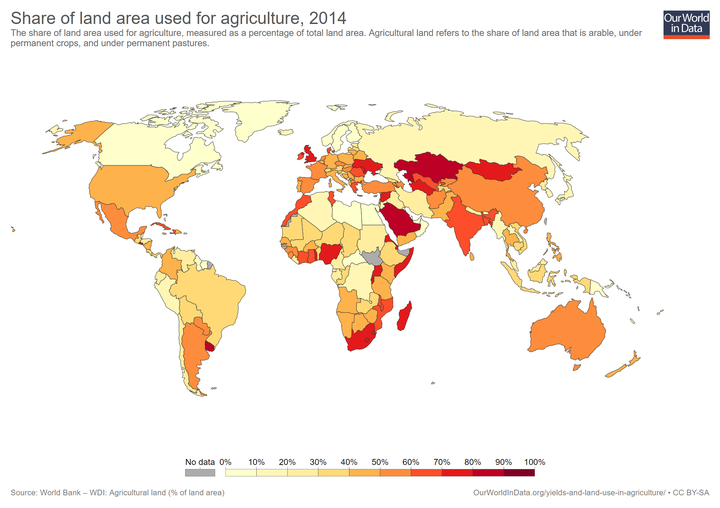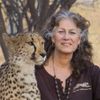The world’s human population is projected to reach 9.8 billion by 2050 (currently 7.5 billion). Wildlife population projections for the future look bleak to say the least with predictions of the Earth’s sixth extinction event being caused by human population growth and competition for resources. Building proper resource management now, especially how food is grown and distributed, will be vitally important in a world with so many more people. Creating a food supply chain that also considers the needs of wildlife will require farmers and conservationists to work together on sustainable techniques for agriculture.
Almost half of the predicted population growth is projected to occur on the continent of Africa with a doubling of the population by 2050 with the newest United Nations predictions showing that the human population in the country of Nigeria (which is slightly more than twice the size of California), will surpass that of the entire United States. Though this new figure made headlines this summer, the UN’s information isn’t really surprising. For the past 10 years, the scientific community has been engaged in a discussion around defining a new geological era. Since the term Anthropocene epoch was introduced, the geological “Age of Man” has come in and out of the news cycle. However, since June, I’ve seen the discussion renewed within my own professional circles and it seems to be branching out across almost every discipline.
As of 2014, Africa’s total area land use for agriculture, combining cropland and grazing, is 1.14 billion hectares (approximately 4.40 million square miles). The average percentage of agricultural land usage across all the cheetah range countries in southern Africa is 59% (Botswana, Zimbabwe, South Africa, Namibia, Zambia and Angola). South Africa alone uses almost 80% of their land for farming and the majority of agricultural production across cheetah range countries is focused toward raising livestock.

Source: World Bank - WDI: Agricultural land (% of land area) Interactive map and more data
Although much of my time in Namibia is spent on the biology and ecology of cheetahs, today, the majority of my time is working directly with livestock farmers on whose land the cheetah lives. Building mutually beneficial relationships within the farming community has been the primary reason Cheetah Conservation Fund (CCF) has experienced success in stabilizing the population of cheetahs in Namibia and has worked as a model throughout the cheetah’s range.
Over the past 27 years we’ve built up our model farm and delivered educational materials and new livestock management methodologies to thousands of farmers. We’ve encouraged every other cheetah stakeholder and NGO across the cheetah’s range to join us in this effort. Now, farmer outreach and education programs are becoming common practice in conservation and fellow conservationists are helping CCF bring the successful model into new areas. In 2013 and again in 2014, CCF sent Livestock Guarding Dog (LGD) puppies to the Ruaha Carnivore Project (RCP) in Tanzania. The puppies were placed with farmers from the Maasai and Barabaig tribes. Tanzania is the third country, outside of Namibia, in which CCF has placed LGD puppies. Every time we place puppies in new territories, I feel a renewed surge of hope for the survival of the cheetah. The effectiveness of the LGD program cannot be overstated, farmers with LGDs report a livestock loss reduction upwards of over 70% of which nearly 50% of these farmers don’t lose any livestock, and therefore, have become very tolerant to having predators as their neighbors.
In addition to hosting farmer training workshops that focus on livestock loss prevention measures, CCF invites farmers to reach out to us directly when they experience a problem. In 2016, we launched the Carnivore Tracker app. Anyone with the free to download app, can log predator sightings in real time. This provides scientists with valuable population information directly from the people live alongside the predators. This year we are launching a new poster campaign encouraging farmers to call our Farmer Carnivore Help Hotline. The posters feature our 24-hour helpline and will be given directly to the local farming community and CCF’s regional conservation partners. The posters will also be available to download in our website and printable in A2 size.

Posters will be made available on CCF’s site www.cheetah.org
CCF is committed to continuing our work toward building relationships within the farming community, reaching out to fellow conservationists and working to ensure a place for wildlife in the years to come. Feeding 2.5 billion more people worldwide is going to require farmers to put forth an enormous effort. It’s going to mean that agricultural businesses will need to change and improve, embracing innovative sustainable methods. We need to support them in their efforts if we want to ensure a place for the cheetah and other wildlife.
